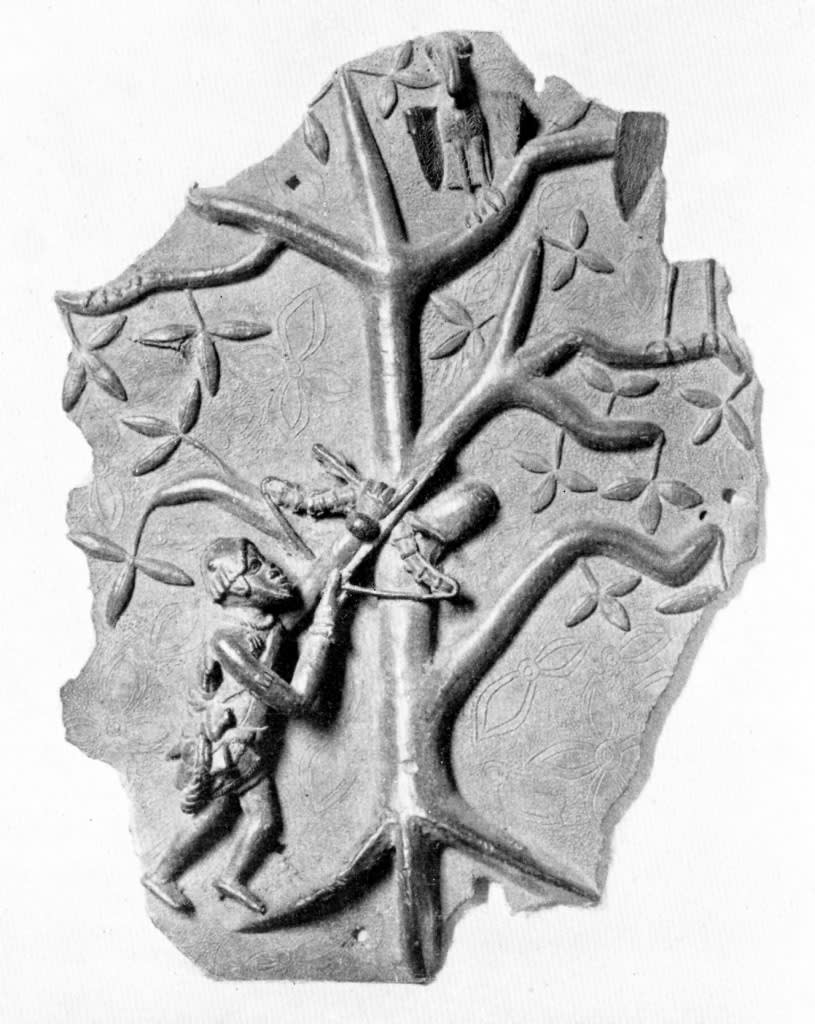
I’m currently obsessed with Benin plaques, so I thought I share one of my favorites. The above example, in the collection of Berlin’s Ethnologisches Museum, was attributed by William Fagg to the ‘Master of the Leopard Hunt’. It’s one of the seven known brass plaques which appear to be by this artist, certainly one of the greatest of Benin bronze casters. His works are free from the rather unimaginative rigidity of the great majority of the plaques, and this fragmentary scene of a Bini shooting at an ibis in the tree is often considered the most beautiful plaque of all. While most of the known Benin plaques show recurrent scenes of ritual, the work of the Master of the Leopard Hunt always depicts unique events, represented with a free sense of composition.
This ‘master’ got his name thanks to another plaque in the same museum, illustrated below, featuring a hunting party and two leopards – which is however less three dimensional. The Oba alone was allowed to slay leopards during his ritual duties. Leopards would be captured as cubs to be raised within the palace and so tamed in preparation for their immolation by the king.

A third plaque from this artist show two Edo men harvesting fluted pumpkins – extremely unusual in subject matter. The two men’s dress is not that of farmers; their pot-like helmets mark palace officials. This complex plaque likely records a harvest for sacrificial reasons. In Benin this pumpkin type is equated with good things – success, unity and longevity – and is a standard sacrifice to two deities, the high god Osanobua and his son Olokun, god of the sea and wealth. New York’s Metropolitan Museum of Art has a rare container in its collection in the shape of such a gourd.

One element that these three plaques have in common is that they all depict actions: an archer aiming at a bird in a tree or palace officials catching leopards or garnering fruits. Together with the three-quarter view and the reference to an environment, this feature is alien to most African art and probably the result of a highly creative mind who dared to experiment with the standard prototype of the human-centered plaques.
